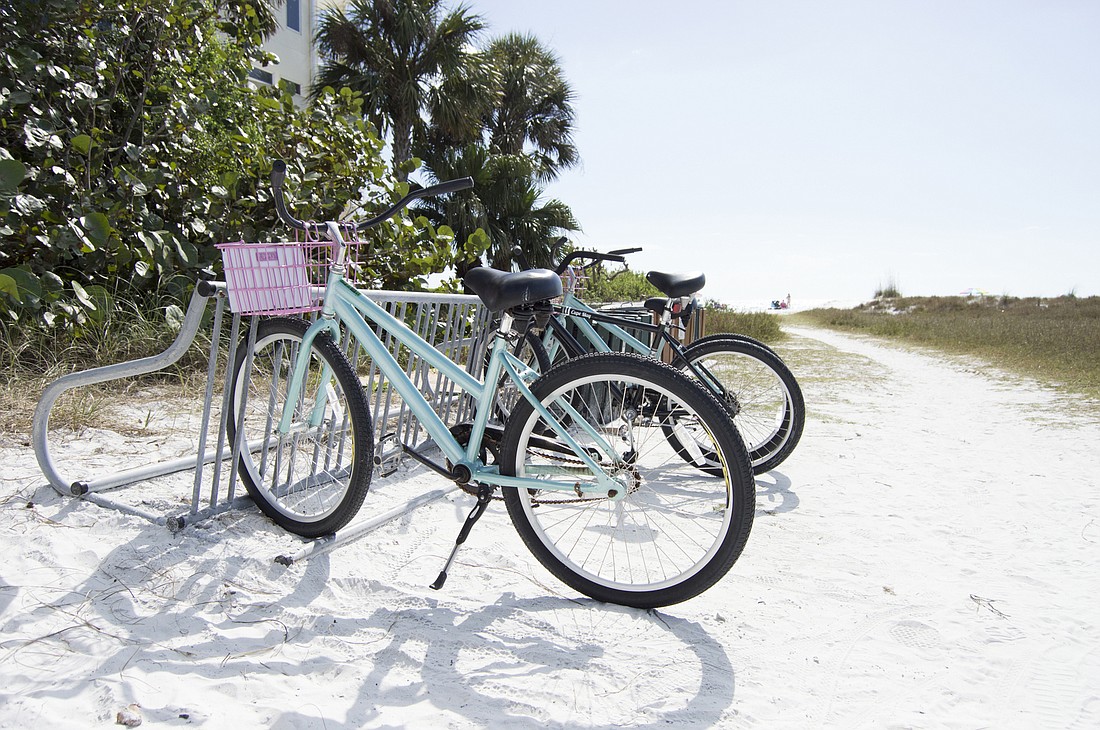- December 5, 2025
-
-
Loading

Loading

When driving to Siesta Key, it’s not uncommon to be overtaken by bicyclists while stuck in snarled traffic. But an out-of-the-box idea to reducing jams could bring more bikes to the area, and potentially fewer cars.
The County Commission in December considered establishing a bike-sharing program on Siesta Key as a component of a larger traffic and parking solution on the island. Programs like this are somewhat scarce in Florida.
Riders fill out no paperwork in a shop but rather swipe a credit or debit card, which unlocks a waiting bike. The rider is charged for the rental time when the bike is returned.
Cities such as St. Petersburg have implemented bike-sharing programs. Lucas Cruse, bicycle and pedestrian coordinator for St. Petersburg, said the city’s program has been a success in the year it has been operating. But would a similar program be a good fit for Siesta Key?
Harold Ashby, a Siesta Key resident and bicyclist who has been involved in making the Key more bike-friendly, said he has seen bike-sharing programs in urban areas around the world. But they’ve been typically driven by commuter use, not tourists.
“In Siesta Key, I honestly don’t think it’s a good solution,” he said. “It’s a solution where it doesn’t solve the need here.”
Ashby said the bike rental shops on Siesta Key provide all the bikes the island needs.
Cruse, however, said he thinks Siesta Key’s small size might make it a good fit.
“Absolutely, it would make sense to do it, maybe as part of a larger regional entity,” Cruse said. “Where biking really works for transportation is those trips for 2-5 miles.”
Tourists account for about half of bike-share users in St. Petersburg, although the most-used hubs are near residential areas and a grocery store.
“My personal opinion is we’re still too small,” Commissioner Charles Hines said in December. “If a private vendor thinks they can make money off it, I’m all for it. For me to put money in it or advocate for that, I’m struggling with it, having been a user of it in much larger communities.”
Residents and bicyclists have been concerned about safety for years on the Key.
Ashby was involved with distributing information about bike safety tips and good bike routes on Siesta Key, as well as helping to get markings painted on the road alerting drivers to share the road with cyclists. But he still has safety concerns.
St. Petersburg, on the other hand, was designed to be pedestrian and bicyclist friendly.
“I would say St. Pete’s the most bikeable city in Florida, and it has been for a while,” Cruse said.
The idea for a bike-sharing program on Siesta Key came up as a way to reduce congestion on the Key. At the same time as the County Commission was discussing a paid parking system or finding off-site parking possibilities, it discussed bike sharing. But according to Cruse, this wasn’t something that St. Petersburg considered.
“The goal wasn’t to reduce traffic congestion because we don’t really have traffic congestion,” he said.
In his city, they emphasize “park once” messaging — getting people to park their car in a garage and then walk or bike to destinations. Finding that initial parking spot can be tough on Siesta Key.
Still, the commission directed county staff to see if bike-sharing vendors were interested.
“Maybe we’re too small, maybe we’re not,” said Commissioner Nancy Detert. “I am all for it as long as it’s a private venture and it doesn’t cost us money.”
St. Petersburg spent $1.5 million to purchase 300 bikes and the necessary equipment from a vendor, who agreed to maintain the bikes for three years.
“I just don’t think it’s a solution that is suitable for Siesta Key,” Ashby said.
Staff expects to review proposals in the first quarter of 2018.